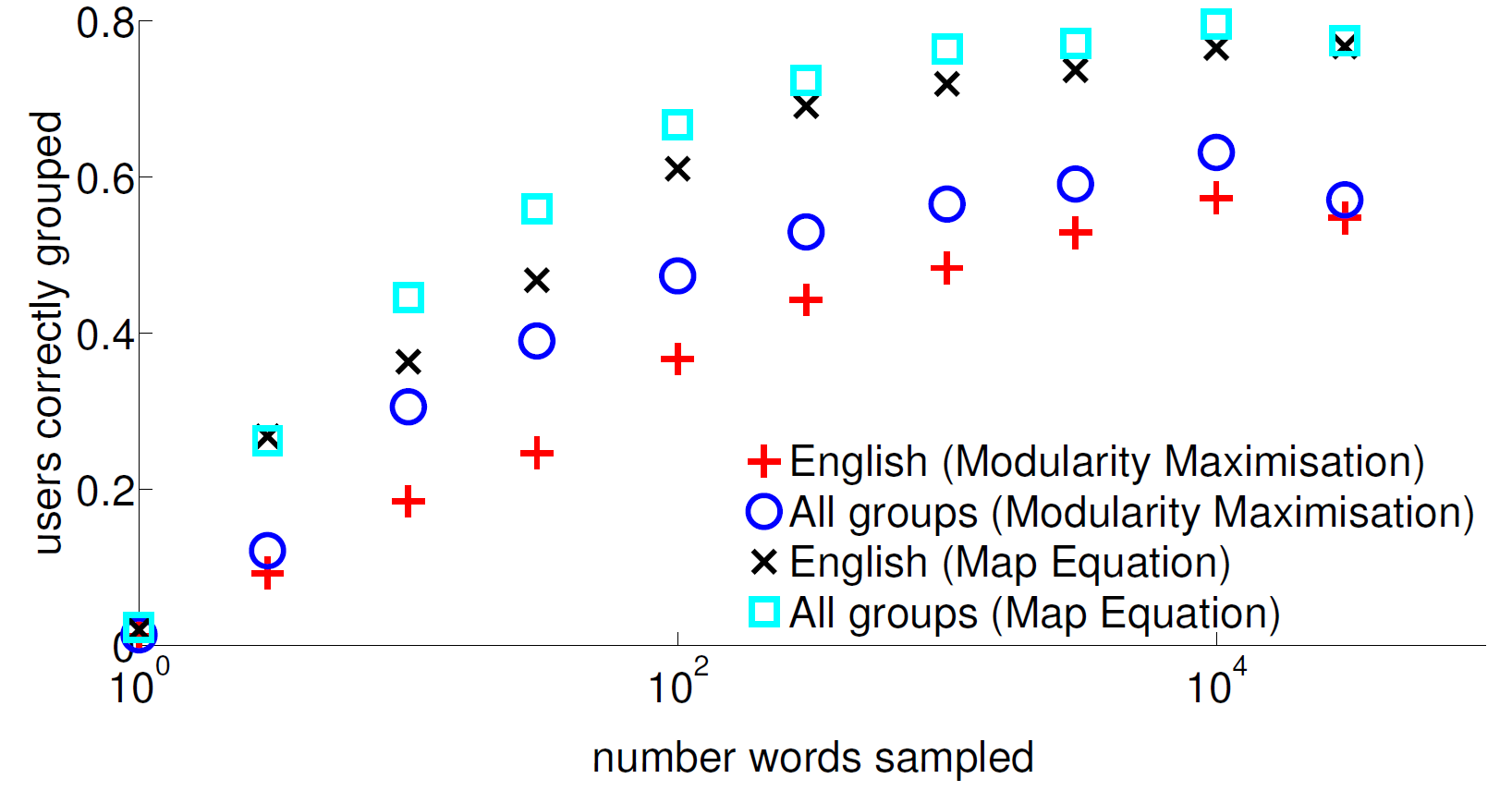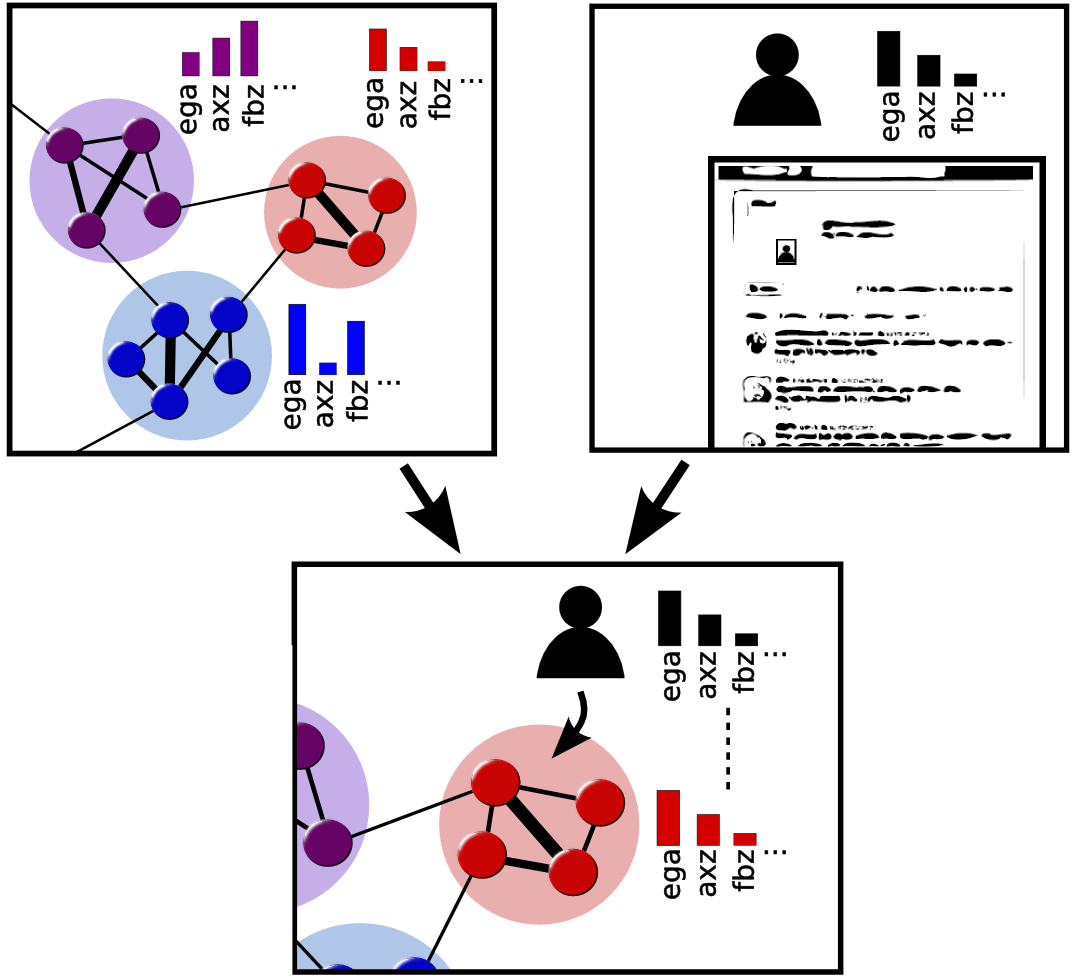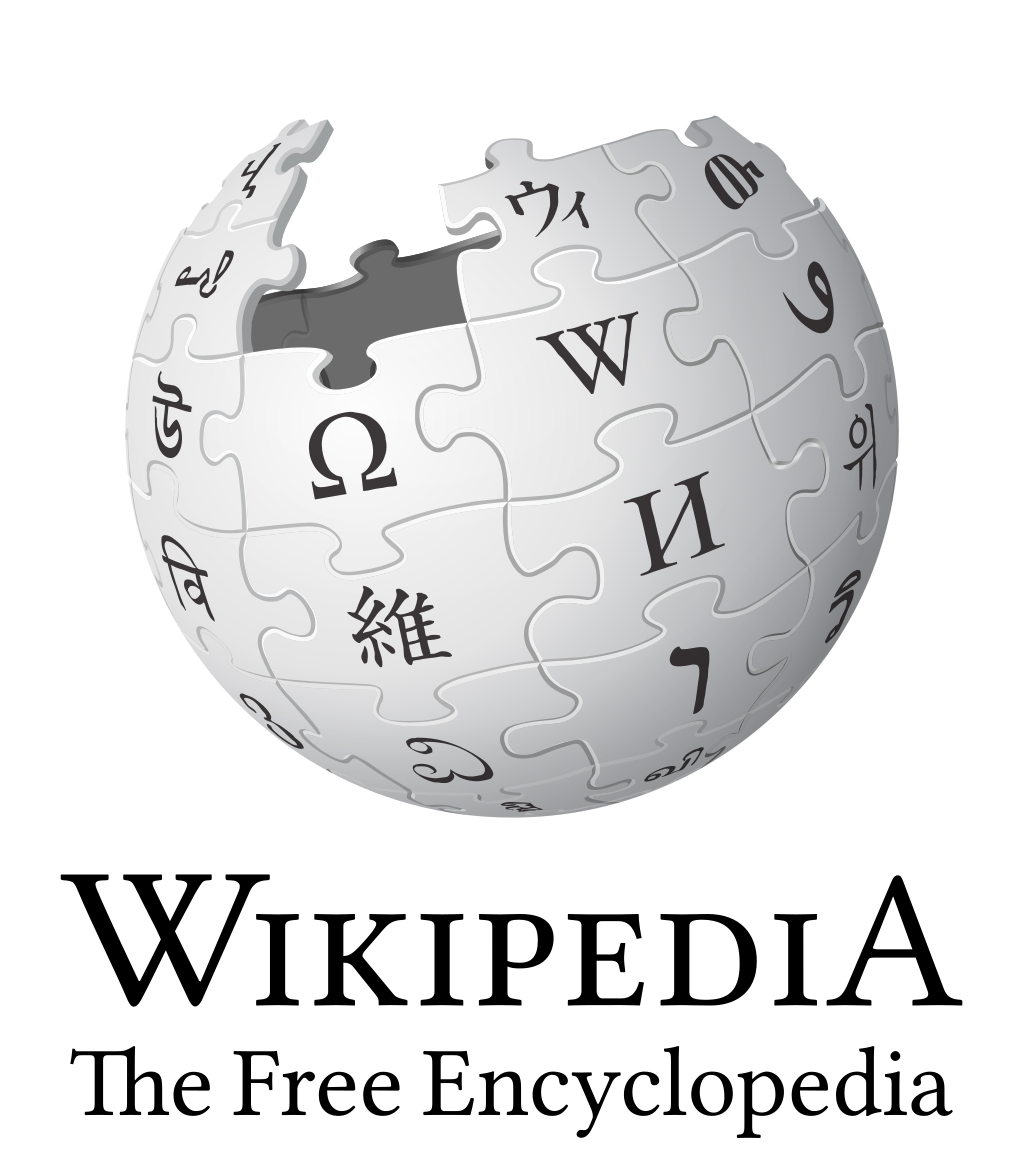

インターネット部族
Internet Tribe


A
social network diagram displaying tribes clustered by friendship ties
among a set of Facebook users// the Inrernet Tribal Chiefs, two bigmen
from their historical archives
☆ インターネット・トライブまたはデジタル・トライブ[1]とは、共通の関心を持つ人々の非公式なオンラインコミュニティまたは組織であり、通常はソーシャ ルメディアやその他のインターネットルートを通じて緩やかに結びついている。この用語は「トライブ」に関連しており、伝統的には地理的にも系譜的にも密接 に関連する人々を指す。[2]今日では、よりバーチャルコミュニティや個人ネットワークに近く、グローバル・デジタル・トライブと呼ばれることが多い。ほ とんどの文化人類学者は、部族とは独自の慣習や文化を実践する(小規模な)社会であり、それらが部族を定義しているという点で意見が一致している。部族は 氏族に分かれ、独自の慣習や文化的な価値観を持ち、それらは「現実の生活」の文脈で行われる活動とは区別される。人々は、ソーシャルネットワーク上で自分 の考えを共有し、守ろうとする傾向が、対面よりも強いと感じている。
| An internet tribe or digital tribe[1]
is a unofficial online community or organization of people who share a
common interest, and who are usually loosely affiliated with each other
through social media or other Internet routes. The term is related to
"tribe", which traditionally refers to people closely associated in
both geography and genealogy.[2] Nowadays, it is more like a virtual
community or a personal network and it is often called global digital
tribe. Most anthropologists agree[weasel words] that a tribe is a
(small) society that practices its own customs and culture, and that
these define the tribe. The tribes are divided into clans, with their
own customs and cultural values that differentiate them from activities
that occur in 'real life' contexts. People feel more inclined to share
and defend their ideas on social networks than they would face to
face.[citation needed] |
イ
ンターネット・トライブまたはデジタル・トライブ[1]とは、共通の関心を持つ人々の非公式なオンラインコミュニティまたは組織であり、通常はソーシャル
メディアやその他のインターネットルートを通じて緩やかに結びついている。この用語は「トライブ」に関連しており、伝統的には地理的にも系譜的にも密接に
関連する人々を指す。[2]今日では、よりバーチャルコミュニティや個人ネットワークに近く、グローバル・デジタル・トライブと呼ばれることが多い。ほと
んどの文化人類学者は、部族とは独自の慣習や文化を実践する(小規模な)社会であり、それらが部族を定義しているという点で意見が一致している。部族は氏
族に分かれ、独自の慣習や文化的な価値観を持ち、それらは「現実の生活」の文脈で行われる活動とは区別される。人々は、ソーシャルネットワーク上で自分の
考えを共有し、守ろうとする傾向が、対面よりも強いと感じている。 |
| Precedents The term "tribe" originated around the time of the Greek city-states and the early formation of the Roman Empire. The Latin term "tribus" has since been transformed to mean "A group of persons forming a community and claiming descent from a common ancestor" [3] As years passed by, the range of meanings have grown greater, for example, "Any of various systems of social organization comprising several local villages, bands, districts, lineages, or other groups and sharing a common ancestry, language, culture, and name" (Morris, 1980, p. 1369). Morris (1980) also notes that a tribe is a "group of persons with a common occupation, interest, or habit," and "a large family."[2] Vestiges of ancient tribe communities were preserved in both large gatherings (like football matches) and in small ones (like church communities). Even though nowadays the range of groups referred to as tribal is truly enormous, it was not until the industrial society eroded the tribal gatherings of more primitive societies and redefined community. However, the existence of social media as we know it today is due to the post-industrial society that has seen the rapid growth of personal computers, mobile phones and the Internet. People now can collaborate, communicate, celebrate, commemorate, give their advice and share their ideas around these virtual clans that have once again redefined the social behaviour.[4] That internet tribes exist, is an expression of the existence of a human tribal instinct.[5][6][7][8][9][10] |
先例 「部族」という用語は、ギリシャの都市国家の時代とローマ帝国の初期形成の頃に生まれた。ラテン語の「トリブス」という用語は、その後「共同体を形成し、 共通の祖先を持つと主張する人々のグループ」を意味するようになった。[3] 時が経つにつれ、その意味の範囲は拡大し、例えば「 いくつかの地方の村、部族、地区、家系、またはその他のグループから構成され、共通の祖先、言語、文化、名称を共有する、さまざまな社会組織の体系」 (Morris, 1980, p. 1369)などである。また、モリス(1980年)は、部族とは「共通の職業、関心事、または習慣を持つ人々の集団」であり、「大家族」であるとも述べて いる。[2] 古代の部族社会の名残は、大規模な集会(サッカーの試合など)にも小規模な集会(教会のコミュニティなど)にも見られる。今日では、部族と呼ばれるグルー プの範囲は実に広範にわたっているが、産業社会がより原始的な社会の部族集会を浸食し、コミュニティを再定義するまでは、そうではなかった。しかし、今日 私たちが知るようなソーシャルメディアの存在は、パーソナルコンピュータ、携帯電話、インターネットの急速な成長を遂げたポスト工業社会によるものであ る。人々は今、こうした仮想的な集団の周りで協力し、コミュニケーションを図り、祝ったり、記念したり、アドバイスを与えたり、アイデアを共有したりする ことができる。こうした仮想的な集団は、社会行動を再び定義し直したものである。 インターネット上の部族が存在することは、人間の本能的な部族意識の存在を示すものである。[5][6][7][8][9][10] |
| History The first attempt of such social communities dates back to at least 2003, when tribe.net was launched. |
沿革 このようなソーシャルコミュニティの最初の試みは、少なくとも2003年に遡り、tribe.netが立ち上げられた。 |
| Tribes from a technical perspective Not only do Twitter tribes have mutual interests,[11] but they also share potentially subconscious language features as found in the 2013 study by researchers from Royal Holloway University of London and Princeton. Dr. John Bryden from the School of Biological Sciences at Royal Holloway states that it is possible to anticipate which community somebody is likely to belong to, with up to 80 percent accuracy. This research shows that people try to join societies based on the same interests and hobbies. In order to achieve this, publicly available messages were sent via Twitter to record conversations between two or more participants. As a result, each community can be characterised by their most used words. This approach can enrich new communities detection based on word analysis in order to automatically classify people inside social networks. The methods of identification of tribes relied heavily on algorithms and techniques from statistical physics, computational biology and network science.[12][13][14][15] A different approach is taken by Tribefinder.[15] The system is able to identify tribal affiliations of Twitter users using deep learning and machine learning.[15] The system establishes to which tribes individuals belong through the analysis of their tweets and the comparison of their vocabulary. These tribal vocabularies are previously generated based on the vocabulary of tribal influencers and leaders using keywords expressing concepts, ideas and beliefs. The final step to make the system learn on how to associate random individuals with specific tribes consists of the analysis of the language these influential tribal leaders use through deep learning. In so doing, classifiers are created using embedding and LSTM (long short-term memory) models. Specifically, these classifiers work by collecting the Twitter feeds of all the users from the tribes that Tribefinder is training on. On these, embedding is applied to map words into vectors, which are then used as input for the following LSTM models. Tribefinder analyzes the individual's word usage in their tweets and then assigns the corresponding alternative realities, lifestyle, and recreation tribal affiliation based on the similarities with the specific tribal vocabularies. |
技術的な観点から見た部族 Twitterの部族には共通の関心事があるだけでなく[11]、ロンドン大学ロイヤルホロウェイ校とプリンストン大学の研究者が2013年に発表した研 究結果によると、潜在的に無意識のうちに言語的特徴を共有している可能性もある。ロンドン大学ロイヤルホロウェイ校の生物科学部のジョン・ブライデン博士 は、ある人物がどのコミュニティに属する可能性が高いかを、最大80パーセントの精度で予測できる可能性があると述べている。この研究は、人々は同じ関心 事や趣味に基づいて社会に参加しようとすることを示している。この目的を達成するために、Twitterを通じて一般公開されているメッセージが送信さ れ、2人以上の参加者の会話を記録した。その結果、それぞれのコミュニティは、最もよく使用される言葉によって特徴づけることができる。このアプローチ は、ソーシャルネットワーク内の人々を自動的に分類するために、単語分析に基づく新しいコミュニティ検出を強化することができる。部族の識別方法は、統計 物理学、計算生物学、ネットワーク科学のアルゴリズムや技術に大きく依存していた。[12][13][14][15] Tribefinderは異なるアプローチを採用している。[15] このシステムはディープラーニングとマシンラーニングを用いて、Twitterユーザーの部族帰属を特定することができる。[15] このシステムは、個人のツイートを分析し、その語彙を比較することで、その個人がどの部族に属するかを特定する。これらの部族の語彙は、概念、アイデア、 信念を表すキーワードを用いて、部族のインフルエンサーや指導者の語彙を基に事前に生成される。 ランダムな個人を特定の部族と関連付ける方法をシステムに学習させるための最終ステップは、影響力のある部族のリーダーたちが使用する言語をディープラー ニングで分析することである。これにより、埋め込みとLSTM(長短期記憶)モデルを使用して分類子が作成される。具体的には、これらの分類器は、 Tribefinderがトレーニングを行っている部族の全ユーザーのTwitterフィードを収集することで機能する。これらのフィードには、単語をベ クトルにマッピングするエンベッディングが適用され、そのベクトルが次のLSTMモデルへの入力として使用される。Tribefinderは、個人のツ イートにおける単語の使用状況を分析し、特定の部族の語彙との類似性に基づいて、対応する代替現実、ライフスタイル、娯楽の部族所属を割り当てる。 |
| An in-depth look into the research The research had four main stages on which it focused: background, results, conclusions and methods.[12][16] Background The language is a system of communication consisting of sounds, words, and grammar, or the system of communication used by people in a particular country or type of work.[17] Language is perhaps the most important characteristic that distinguishes human beings from other animals.[18] In addition, it has a wide range of social implications that can be associated with social or cultural groups. People usually group in communities with the same interests. This will result in a variation of the words they use because of the differentiation of terms from each domain. Therefore, the hypothesis of this study would be that this variation should closely match the community structure of the network. To test this theory, around 250,000 users from the social networking and microblogging site Twitter were monitored in order to analyse whether the groups identified had the same language features or not. As Twitter uses unstructured data and users can send messages to any other users, the study had to be based on complex algorithms. These algorithms had to determine the word frequency inside messages between people and make a link to the groups they usually visited.[12][16] Results and discussion  Communication between and within tribes of Twitter users clustered based on word usage. Tribes tend to communicate more within than between themselves. The problem of detecting the community features is one of the main issues in the study of networking systems. Social networks naturally tend to divide themselves into communities or modules.[19] However, some world networks are too big so they must be simplified before information can be extracted.[20] As a result, an effective way of dealing with this drawback for smaller communities is by using modularity algorithms in order to partition users into even smaller groups.[19] For larger ones, a more efficient algorithm called 'map equation' decomposes a network into modules by optimally compressing a description of information flows on the network.[20] Each community was therefore characterised according to the words they used the most, based on a ranking algorithm. To determine the significance of word usage differences, word endings and word lengths were also measured and showed that the pattern found was the correct one. Moreover, these studies also helped in predicting community membership of users, by comparing their own word frequencies with community word usage. This helped in forecasting which community a certain user is going to access based on the words that they are using.[12]  The proportion of users whose topological community association is correctly predicted by the study. Conclusions  An illustration of the method for predicting which community a user is embedded in. The aim of this research was to study the bond between community structure in a social network environment and language use within the community . The striking pattern that was found suggests that people from different clans tend to use different words based on their own interests and hobbies.[13] Even though this approach did not manage to cover all people inside Twitter, it has several advantages over ordinary surveys that cover a smaller scale of groups: it is systematic, it is non-intrusive and it easily produces large volumes of rich data. Moreover, other cultural characteristics can be found out when extending this study. For example, whether individuals that belong to multiple communities use different word sets in each of them.[12][16] Methods A process called snowball-sampling helped forming the sample network.[16] Each user's tweets and messages were recorded and any new users referenced were added to a list from where they were picked to be sampled. Messages that were copies have been ignored. In order to find out the words that characterise each clan, the fraction of people that use a certain word was compared with the fraction of people that use that word globally. The difference between communities has also been measured by comparing the relative word usage frequency.[12] |
研究の詳細 この研究は、背景、結果、結論、方法という4つの主要な段階に焦点を当てていた。[12][16] 背景 言語とは、音、単語、文法から成るコミュニケーションの体系、または特定の国や職種の人々が用いるコミュニケーションの体系である。[17] 言語は、人間を他の動物から区別する最も重要な特徴であるかもしれない。[18] さらに、言語には社会集団や文化集団に関連する幅広い社会的意味合いがある。 人々は通常、同じ関心を持つ人々でコミュニティを形成する。その結果、各領域の用語が分化するため、使用される言葉にもバリエーションが生じる。したがっ て、この研究の仮説は、このバリエーションがネットワークのコミュニティ構造と密接に一致するはずだというものである。この理論を検証するために、ソー シャルネットワーキングおよびマイクロブログサイトTwitterの約25万人のユーザーをモニターし、特定されたグループが同じ言語的特徴を持つかどう かを分析した。Twitterは非構造化データを使用しており、ユーザーは他のユーザーにメッセージを送信できるため、この研究は複雑なアルゴリズムに基 づいて行わなければならなかった。これらのアルゴリズムは、人々間のメッセージ内の単語の出現頻度を決定し、通常訪問するグループへのリンクを作成しなけ ればならなかった。[12][16] 結果と考察  Twitterユーザーの部族間のコミュニケーションおよび部族内のコミュニケーションは、単語の使用状況に基づいてクラスタリングされた。部族は、部族間のコミュニケーションよりも部族内のコミュニケーションをより多く行う傾向にある。 コミュニティの特徴を検出する問題は、ネットワークシステムの研究における主要な問題のひとつである。ソーシャルネットワークは、自然にコミュニティやモ ジュールに分かれる傾向がある。[19] しかし、一部の世界規模のネットワークはあまりにも巨大であるため、情報を抽出するには単純化する必要がある。[20] その結果、小規模なコミュニティのこの欠点を処理する効果的な方法は、モジュール性アルゴリズムを使用してユーザーを 。より大きなコミュニティについては、「マップ方程式」と呼ばれるより効率的なアルゴリズムが、ネットワーク上の情報フローの記述を最適に圧縮すること で、ネットワークをモジュールに分解する。単語使用の差異の重要性を判断するために、単語の語尾や単語の長さも測定され、発見されたパターンが正しいもの であることが示された。さらに、これらの研究は、ユーザー自身の単語頻度とコミュニティの単語使用を比較することで、ユーザーのコミュニティのメンバー シップを予測するのにも役立った。これにより、ユーザーが使用している単語に基づいて、そのユーザーがどのコミュニティにアクセスするかを予測することが 可能になった。  この研究によってトポロジカル・コミュニティの関連性が正しく予測されたユーザーの割合。 結論  ユーザーがどのコミュニティに属しているかを予測する方法の説明図。 この研究の目的は、ソーシャルネットワーク環境におけるコミュニティ構造と、そのコミュニティ内での言語使用との関連性を調査することだった。発見された 顕著なパターンは、異なる氏族に属する人々は、それぞれの関心や趣味に基づいて異なる言葉を使う傾向があることを示唆している。[13] このアプローチはTwitter内のすべての人々をカバーすることはできなかったが、より小規模なグループを対象とする通常の調査よりもいくつかの利点が ある。それは、系統的であり、邪魔にならず、大量の豊富なデータを簡単に生成できることである。さらに、この研究を拡大すれば、他の文化的特性も見つけら れる可能性がある。例えば、複数のコミュニティに属する個人が、それぞれのコミュニティで異なる語彙セットを使用しているかどうか、などである。[12] [16] 方法 サンプルネットワークの形成には、スノーボールサンプリングと呼ばれるプロセスが役立った。[16] 各ユーザーのツイートとメッセージが記録され、参照された新規ユーザーはリストに追加され、そこからサンプルとして抽出された。コピーされたメッセージは 無視された。各グループの特徴を表す単語を見つけるため、特定の単語を使用する人の割合を、その単語を世界的に使用する人の割合と比較した。また、コミュ ニティ間の違いも、相対的な単語使用頻度を比較することで測定した。[12] |
| Different spellings within tribes Words, and the way we spell them are in a continuous change, as we find new ways to communicate. Despite the fact that traditional dictionaries do not take into account the changes, online ones have adopted many of them.[21] An interesting fact outlined in the research above is that communities tend to use their own distinctive spelling for words. According to Professor Vincent Jansen from Royal Holloway online communities spell words in different ways, just as people have different regional accents.[14] For example, Justin Bieber fans tend to end words in "ee" as in "pleasee", while school teachers tend to use long words. Moreover, the largest group found in the study was composed of African Americans who were using the words "nigga", "poppin", and "chillin". Members of this community also tend to shorten the ends of the words, replacing "ing" with "in" and "er" with "a".[13] |
部族内での異なる綴り 言葉、そしてその綴り方は、新しいコミュニケーション方法が発見されるたびに、絶え間なく変化している。従来の辞書ではこうした変化は考慮されていない が、オンライン辞書ではその多くが採用されている。[21] 上記の研究で示された興味深い事実として、コミュニティは独自の独特な綴りで言葉を表現する傾向がある。ロイヤルホロウェイ大学のヴィンセント・ヤンセン 教授によると、オンラインコミュニティでは、人々が異なる地域的アクセントを持つように、単語のつづり方も異なるという。[14] 例えば、ジャスティン・ビーバーのファンは「pleasee」のように語尾を「ee」で終わらせる傾向があるが、学校の教師は長い単語を使う傾向がある。 さらに、この研究で最も多く見られたグループは、アフリカ系アメリカ人で、「nigga」、「poppin」、「chillin」などの単語を使用してい た。このコミュニティのメンバーは、語尾を短縮する傾向があり、「ing」を「in」、「er」を「a」に置き換える。[13] |
| The campfire Each tribe has an online-platform (such as Flickr or Tumblr), called campfire around which they gather. These campfires tend to enable one or more of the following three tribal activities:[1] Cooperation (e.g. Wikipedia) Communication (e.g. Social networks) Cognition (e.g. Blogs) However, some brands are building their own tribes around platforms outside of these. |
キャンプファイヤー 各部族は、FlickrやTumblrなどのオンラインプラットフォーム(キャンプファイヤーと呼ばれる)を囲んで集まっている。これらのキャンプファイヤーは、以下の3つの部族活動のうちの1つまたは複数を可能にする傾向がある。 協力(例:ウィキペディア) コミュニケーション(例:ソーシャルネットワーク) 認知(例:ブログ) しかし、一部のブランドは、これらのプラットフォーム以外のプラットフォームを軸に独自の部族を構築している。 |
| Cooperation Cooperation is the action of working together to the same end.[22] Cooperation developed naturally over time, as it helped companies to streamline their research costs and to better answer to users' requirements. As a result, nowadays organisations are looking for flexible structures that can easily adapt to this rapidly changing environment. Groupware systems perfectly cater to these needs of companies. Informal communication predominates and specialists in certain domains exchange their experience with other people within the groupware environment. Collaboration and cooperation are available through instant messages; people can discuss, chat and swap ideas.[citation needed] Moreover, people can work together while they are located remotely from each other.[23] Groupware can be split into three categories: communication, collaboration and coordination, depending on the level of cooperation and technology involved in the process.[24] One of the biggest and well-known cooperation software is Wikipedia.  The logo of Wikipedia Wikipedia Wikipedia is a collaborative software because anyone can edit it. Any user can edit articles, view past revisions and discuss through a forum the current state of each article. Due to the fact that anyone can change it and find information very quickly, it has become one of the 10 most accessed sites on the Internet.[25] Advantages Wikipedia has many advantages over other encyclopedias:[25][26] It is free and open for anyone on the Internet; All past edits and chats from the forum are public and everyone can see them; Updates happen frequently; It contains millions of articles; Easy to use and learn; Disadvantages However, there are also some drawbacks:[25][26] Information can be inaccurate; It is open to spam and vandalism; Some articles can contain omissions and be hard to understand; It can be too open sometimes (for confidential documentation); It requires Internet connectivity. It has a bias as most moderators and users are young and males. |
協力 協力とは、同じ目的のために共に働くことである。[22] 協力は、企業の研究費の合理化や、ユーザーのニーズへのより良い対応を可能にするため、時間をかけて自然に発展してきた。その結果、今日では組織は、この 急速に変化する環境に容易に適応できる柔軟な構造を求めている。グループウェアシステムは、企業のこうしたニーズに完璧に応える。非公式なコミュニケー ションが主流となり、特定の領域の専門家がグループウェア環境内で他の人々と経験を交換する。インスタントメッセージによるコラボレーションや協力が可能 であり、議論やチャット、意見交換ができる。さらに、離れた場所にいる人同士でも共同作業ができる。グループウェアは、コミュニケーション、コラボレー ション、コーディネーションの3つのカテゴリーに分類できる。コラボレーションのレベルと、プロセスに関わるテクノロジーのレベルによって分類される。  ウィキペディアのロゴ ウィキペディア ウィキペディアは、誰もが編集できる共同作業ソフトウェアである。 どのユーザーも記事を編集したり、過去の改訂版を閲覧したり、フォーラムを通じて各記事の現状について議論したりすることができる。 誰もが変更でき、非常に迅速に情報を検索できるという事実により、インターネット上で最もアクセス数の多い10サイトの一つとなっている。 利点 ウィキペディアには、他の百科事典に比べて多くの利点がある。 インターネット上で誰でも無料で利用できること、 過去の編集やフォーラムでのチャットのすべてが公開されており、誰でも見ることができること、 更新が頻繁に行われること、 数百万もの記事が掲載されていること、 利用しやすく学習しやすいこと、 デメリット しかし、欠点もある。 情報が不正確である可能性がある。 スパムや破壊行為の対象となりやすい。 一部の記事には抜けがあり、理解しにくいものもある。 (機密文書の場合)公開されすぎている場合がある。 インターネット接続が必要である。 ほとんどのモデレーターとユーザーが若年層と男性であるため、偏りがある。 |
| Communication Communication is the act or an instance of communicating; the imparting or exchange of information, ideas, or feelings.[27] Communication has drastically changed over time and social networks have changed the way people communicate.[28] Even though people]can interact with each other 24/7, there is a new wave of barriers and threats. In the workplace environment, electronic Communication has overtaken face-to-face and voice-to-voice Communication by far. This major shift has been done in advantage of Generation Y, who prefer instant messaging than talking directly to someone. It is often said that it could become an ironic twist, but social media has the real potential of making us less social.[29] However, there are studies that confirm that people are becoming more social, but the style in which they interact with each other has changed a lot. One of the major drawbacks of social networks is privacy, as people tend to trust others more rapidly and send more open messages about themselves. As a result, personal information can be easily exposed to other persons.[30] Twitter and Facebook are two of the biggest social networks in the world. This section is written like a personal reflection, personal essay, or argumentative essay that states a Wikipedia editor's personal feelings or presents an original argument about a topic. Please help improve it by rewriting it in an encyclopedic style. (December 2015) (Learn how and when to remove this message) Facebook is currently the largest social network in the world with more than 1 billion people using this website. This actually means that approximately one in seven people on Earth use Facebook.[31] Facebook users share their stories, images and videos in order to celebrate and commemorate events together. They can also play social games and like other Facebook pages.[4] Moreover, there is also a section called 'News Feed' where users can see social information from their friends or from the pages that they liked or shared. Each user has their own profile page that is called 'wall', where they can post all the above-mentioned materials (their friends can do this as well).[32] The biggest advantage of Facebook is that you can make new friends, as well as find old acquaintances and restart socialising with them. One of the most useful feature of Facebook is the existence of groups. Users with the same interests can create a new group or take part in already existing ones to debate information and exchange their ideas. However, there are also groups that are created to declare an affiliation, such as an obsession for different subjects.[33] Twitter is another social network that allows users to send and read short messages called 'tweets'. Even though messages can contain only 280 characters, this is the perfect length for sending status updates to followers.[34] The main advantage of Twitter is that people can gain followers quickly and share ideas and links very fast. There are networks of influential people who can be connected via Twitter.[35] On Twitter, tribes manifest themselves as followers of either a person, a company or an institution. As a result, it can be used as a marketing tool to make someone's product visible, on condition that a big tribe of followers is created. In order to do this, the right community must be built, as finding the right people can be a challenge.[36] There are some steps that users could take into account in order to make connections and therefore make people follow them: search using Twitter search, follow the followers of other users, look at Twitter Lists, use #Hashtags and find third-party programs.[35] |
コミュニケーション コミュニケーションとは、情報を伝達したり交換したりすること、またはその行為や事例である。コミュニケーションは時代とともに劇的に変化しており、ソー シャルネットワークは人々のコミュニケーションの方法を変えた。人々は24時間365日、互いに交流することができるようになったが、新たな障壁や脅威も 生まれている。職場環境においては、電子コミュニケーションが対面式や音声によるコミュニケーションをはるかに上回っている。この大きな変化は、誰かと直 接話すよりもインスタントメッセージを好むミレニアル世代に有利に働いている。皮肉な展開になる可能性があることはよく言われているが、ソーシャルメディ アには、私たちをより社交的にする真の可能性がある。しかし、人々はより社交的になっているが、互いに交流する方法は大きく変化していることを裏付ける研 究もある。ソーシャルネットワークの大きな欠点のひとつはプライバシーである。人々は他者をより素早く信頼し、自分自身についてよりオープンなメッセージ を送る傾向にある。その結果、個人情報が簡単に他の人々にさらされる可能性がある。[30] TwitterとFacebookは世界最大のソーシャルネットワークである。 この節は、ウィキペディア編集者の個人的な感情を述べたり、トピックに関する独自の主張を展開する、個人的な感想、個人的なエッセイ、または論説文のよう な書き方をしている。百科事典的なスタイルで書き直すことで、この節を改善できる。 (2015年12月) (このメッセージの削除方法とタイミングについて学ぶ) Facebookは現在、世界最大のソーシャルネットワークであり、10億人以上がこのウェブサイトを利用している。これは、地球上の7人に1人が Facebookを利用していることを意味する。Facebookユーザーは、出来事を一緒に祝ったり記念したりするために、自分のストーリーや画像、動 画を共有している。また、ソーシャルゲームをプレイしたり、他のFacebookページを「いいね」することもできる。さらに、「ニュースフィード」と呼 ばれるセクションもあり、ユーザーは友人や「いいね」したり共有したりしたページからのソーシャル情報を閲覧できる。各ユーザーには「ウォール」と呼ばれ る独自のプロフィールページがあり、そこには前述のすべての素材を投稿することができる(ユーザーの友人でも投稿可能)[32]。Facebookの最大 の利点は、新しい友人を作ったり、昔の知り合いを見つけたり、彼らとの交流を再開したりできることである。Facebookの最も便利な機能のひとつは、 グループの存在である。同じ興味を持つユーザーは、新しいグループを作成したり、すでに存在するグループに参加して、情報を討論したり、意見を交換したり することができる。しかし、特定の対象に対する執着心など、所属を表明するために作成されたグループもある。 Twitterは、ユーザーが「ツイート」と呼ばれる短いメッセージを送信したり読んだりできるもう一つのソーシャルネットワークである。メッセージは 280文字までしか入力できないが、フォロワーに近況を伝えるにはこの長さが最適である。Twitterの主な利点は、フォロワーを素早く獲得でき、アイ デアやリンクを非常に素早く共有できることである。Twitterを通じてつながることのできる影響力のある人々のネットワークが存在する。[35] Twitterでは、人々、企業、組織のフォロワーとして部族が現れる。その結果、フォロワーの大きな部族が形成されることを条件に、誰かの製品を目立た せるマーケティングツールとして利用できる。そのためには、適切なコミュニティを構築する必要があるが、適切な人々を見つけるのは難しい。[36] つながりを作り、人々にフォローしてもらうために、ユーザーが考慮すべきいくつかのステップがある。Twitter検索を使用して検索し、他のユーザーの フォロワーをフォローし、Twitterリストを確認し、#ハッシュタグを使用し、サードパーティのプログラムを見つけることである。[35] |
| Conclusion As Seth Godin states, "The Internet eliminated geography".[1] People join tribes or clans because they find and share the same ideas and interests with other people.[11] The main disadvantage of old tribes is that they could not influence group behaviour. On the other hand, new tribes are self-sustaining and can survive without a leader, they are not necessarily dialogue based and they are long lasting. As it has been demonstrated within this article, tribes have influenced the way languages, organisations and cultures work.[1] They have redefined old concepts with the help of social media and have changed the way people will interact in the future.[4] |
結論 セス・ゴーディンが述べているように、「インターネットは地理を排除した」のである。[1] 人々は、他の人々と共通の考えや興味を見出し、共有するために、部族や一族に参加する。[11] 旧来の部族の主な欠点は、集団の行動に影響を与えることができないことである。一方、新しい部族は自立しており、リーダーが不在でも存続できる。必ずしも 対話に基づくものではなく、長続きする。本記事で示したように、部族は言語、組織、文化のあり方に影響を与えている。[1] ソーシャルメディアの力を借りて古い概念を再定義し、人々の将来の交流のあり方を変えている。[4] |
| Digital anthropology Digital sociology Geek culture Social network Social networking Social Web Sociology of the Internet Splinternet |
デジタル人類学 デジタル社会学 オタク文化 ソーシャルネットワーク ソーシャルネットワーキング ソーシャルウェブ インターネット社会学 スプリットインターネット |
| https://en.wikipedia.org/wiki/Tribe_(internet) |
リ ンク
文 献
そ の他の情報
Copyleft, CC, Mitzub'ixi Quq Chi'j, 1996-2099
☆
 ☆
☆